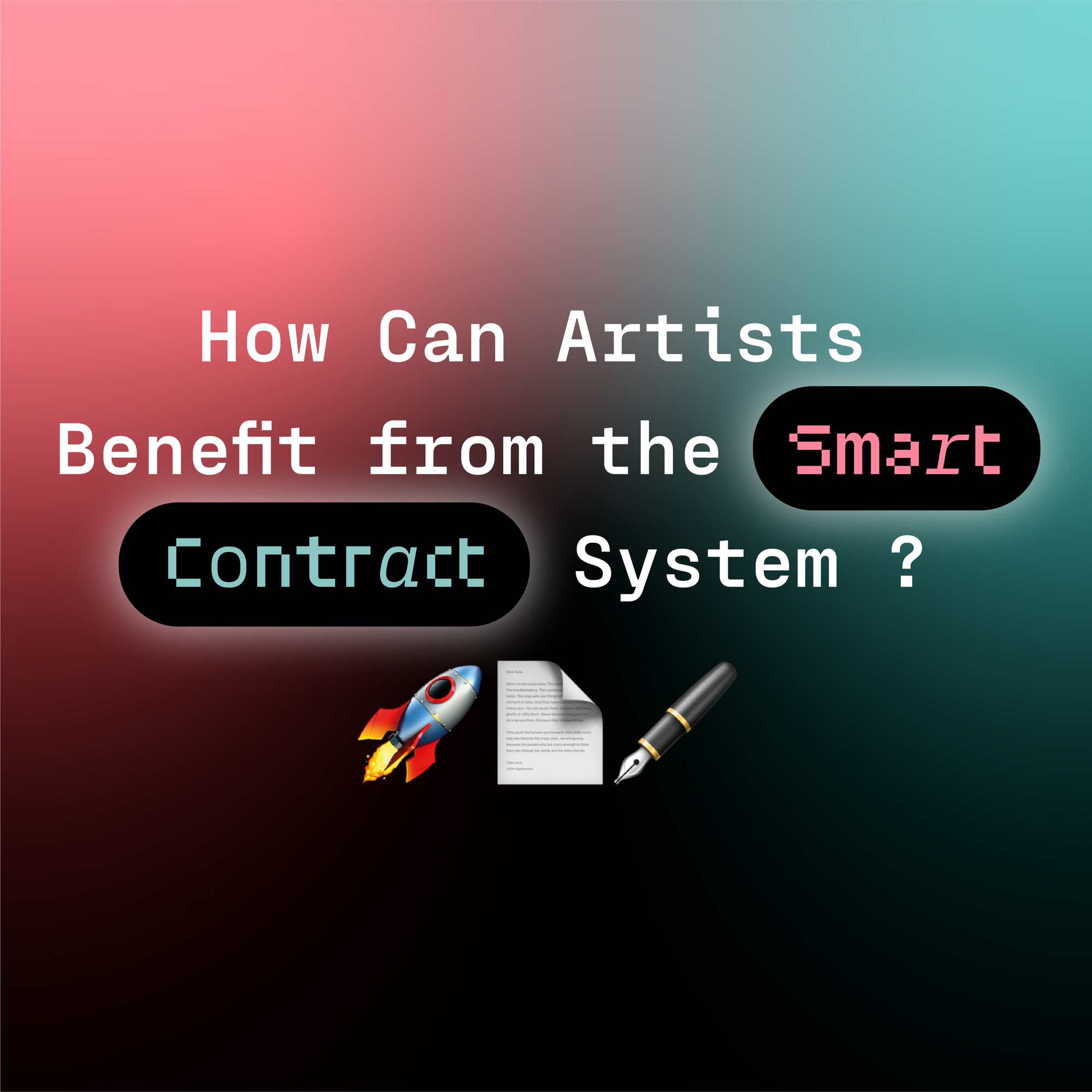How Can Artists Benefit from the Smart Contract System?
By Terrain.art | Feb 21 2022 · 6 min read
From claiming a larger share of the sale price to enjoying royalties for their creative works, there’s a host of unique benefits that the smart contract system offers.
The image of the tortured artist — one unwilling to pander to the demands of the market and compromise his artistic vision — has long been a part of the folklore of the art world. There is, however, a kernel of truth in this stereotype. Despite the boom in the art market, young artists continue to be underpaid and often have a difficult time navigating through the quagmire of galleries, art collectors, and dealers.
With the rise of NFT sales and smart contracts, however, artists are finally getting their due. But what are smart contracts? And how do they benefit the artist?
Simply put, smart contracts are programs stored on the blockchain that run only when certain predetermined conditions are met. What is particularly beneficial for artists is that smart contracts can automate the execution of agreements without the involvement of any intermediaries. The result is much faster processing of agreements that would have otherwise taken days or even perhaps months to be finalized. Since the entire process runs on an open ledger system, anyone can check the records and be sure about authenticity.
What is blockchain technology? How can artists benefit from this technology?
In the words of Klaub Schwab, the founder of World Economic Forum, “The blockchain is a shared, programmable, cryptographically secure and therefore trusted ledger which no single user controls and which can be inspected by anyone.”
Experts believe that the blockchain-enabled smart contract system can be a gamechanger for the creative economy, by giving artists, musicians and even sports personalities a platform to directly reach out to their target audience and claim the true value of their work.
Here are some of the benefits of this technology when it comes to the intellectual rights of artists:
- A common complaint of artists is that they are often forced to settle for a smaller share of the revenue as intermediaries such as art dealers and galleries often demand a hefty cut. While the percentage of the revenue demanded by intermediaries differs from one market to another, in the art world it can often go as high up as 50%.
- Secondly, artist’s works are often commercially misused. Copyright laws and intellectual property rights are not uniform across the world. Artists, including painters and photographers, often complain that works are being commercially used and circulated, although they continue to be denied royalty.
- Finally, when it comes to digital works that can easily be replicated and shared across the internet, problems of counterfeiting can arise. Graphic and digital artists complain their works are shared across the virtual space with no attribution.
Blockchain-backed NFT sales of artworks can address all these issues effectively, argue supporters of the technology. This technology creates an artist-centric economy in which smart contracts can enable the easy execution of a transaction. It creates a peer-to-peer system, in which no middleman is involved. It promotes efficient pricing and even enables micro-monetizing. Finally, it establishes a reputation system, thereby effectively counteracting the sale of fake artworks.
What are the Advantages of a Smart Contract System?
- In a smart contract system, the artist can manage the digital rights of the artwork, unlike a traditional contract system, which, many argue, may be too complicated and esoteric to comprehend. Also, it leaves artists with very little space to negotiate the terms of a traditional contract.
- A smart contract system enables a fairer sharer of the revenue and royalties to the artist than a traditional contract system. The payment to the artist can be processed much faster in a smart contract system.
- Creative content can often be mispriced, thanks to the presence of intermediaries who demand cuts that are often not commensurate with the services they provide. Since the smart contract is a peer-to-peer system, there’s no involvement of any middlemen in the entire process.
- Art, music, or any other creative content can often become unaffordable for the average consumer. With the micro-monetizing feature of smart contracts, an artist can charge only for the consumable unit, which may be a small part of the larger work. This is particularly true for music and video content. A buyer may be interested only in a small portion of the larger work and may be unwilling to pay for the entire work. By splitting a creative work into multiple smaller units, an artist has a better chance of closing a deal.
- Most importantly, blockchain technology enables verification on the part of both the seller as well as the buyer. This can effectively curb the menace of counterfeiting that has long plagued the creative world.
In conclusion, it may be said that although blockchain-backed smart contract systems have several benefits, the percentage of blockchain-ready artists remains woefully low. Most artists continue to depend on traditional agents to market their products.
Terrain.art is a unique initiative to offer a platform to young and emerging South Asian visual artists to sell their artworks directly to buyers via blockchain technology. Such platforms may just be the first step towards a blockchain-backed creative economy in the future.

